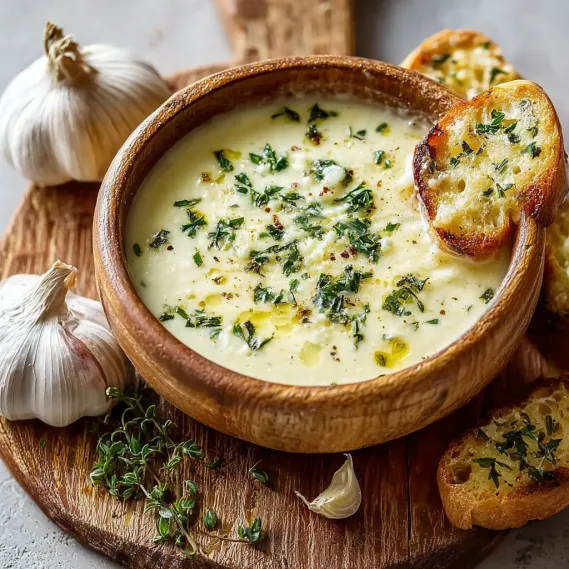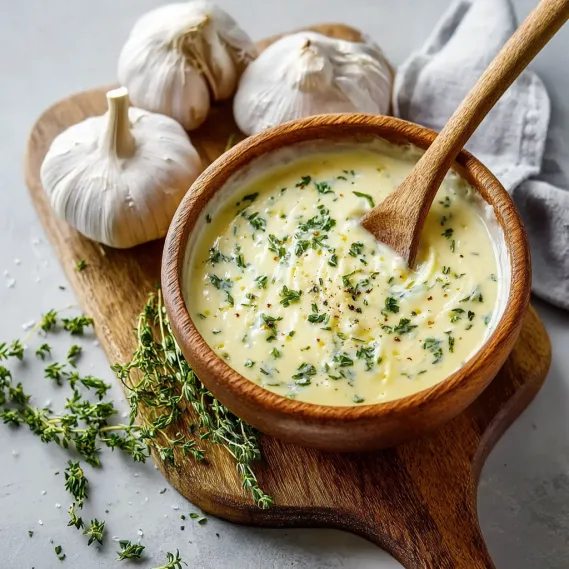 Pin
Pin
This Lebanese garlic sauce, known as toum, has transformed my kitchen repertoire with its incredible versatility and bold flavor profile. The creamy, cloud-like spread delivers an intense garlic punch that elevates everything from simple grilled meats to humble roasted vegetables.
I first made toum after a memorable visit to a Lebanese restaurant where they served it alongside grilled chicken. My family became instantly obsessed, demanding I recreate it at home. Now it's a permanent staple in our refrigerator.
Ingredients
- Fresh garlic cloves: the star of the show providing intense flavor and natural emulsifying properties
- Neutral oil: creates the silky texture without competing with the garlic flavor
- Fresh lemon juice: balances the garlic intensity and helps create the stable emulsion
- Kosher salt: enhances flavors and helps break down the garlic cells
- Ice water (optional): but helpful for creating a stable emulsion in warmer kitchens
Step-by-Step Instructions
- Prepare the Garlic Base:
- Process peeled garlic cloves with salt until finely minced. Take time to scrape down the sides of the bowl to ensure even processing. The salt not only seasons but helps break down the garlic cells, releasing compounds that aid in emulsification.
- Begin the Emulsion:
- With processor running continuously, add the first portion of oil in an extremely slow, thin stream. This initial stage is critical for establishing the emulsion. Pour too quickly and you'll end up with separated, oily garlic rather than the fluffy sauce we're after.
- Introduce Acidity:
- Add a tablespoon of lemon juice after the first oil addition. This acidity further stabilizes the emulsion while balancing the garlic's intensity. The optional splash of ice water can help maintain the correct temperature and consistency.
- Build the Structure:
- Continue alternating between oil, lemon juice, and optional ice water in small, measured amounts. This slow building process creates the remarkable light, airy texture that defines authentic toum. Each addition should be fully incorporated before adding more.
- Achieve the Perfect Texture:
- Monitor the transformation from rough paste to a snow-white, fluffy cream. The mixture will visibly lighten and increase in volume. When properly emulsified, it should hold soft peaks similar to whipped cream.

The first time I served toum at a family gathering, my Lebanese grandmother shed tears of joy. She said it tasted exactly like her mother used to make, confirming I had mastered this traditional recipe that connects generations through flavor.
Troubleshooting Broken Emulsions
If your toum separates during preparation, don't panic. This common issue happens when oil is added too quickly or the processor generates too much heat. To rescue it, start fresh with a single egg white or tablespoon of cold water in a clean processor, then slowly incorporate your broken mixture back in, drizzling it as if it were oil. The protein in the egg white creates a new emulsion foundation.
Flavor Variations
While traditional toum focuses purely on garlic, gentle modifications can create exciting alternatives. Adding herbs like basil or mint during the final processing creates beautiful color and complementary flavors. For a mild version that retains the texture but reduces garlic intensity, briefly blanch the garlic cloves before processing. This removes some pungency while preserving the essential oils needed for emulsification.
Cultural Context
Toum holds an esteemed place in Lebanese cuisine, traditionally served alongside grilled meats, particularly chicken shawarma. Its name literally means "garlic" in Arabic, highlighting its singular focus. Historically, toum was laboriously hand-pounded in wooden mortars, requiring significant skill and patience. Modern food processors have democratized this once-specialized preparation, bringing this magnificent condiment into home kitchens worldwide.
Storage Wisdom
Keep toum in a glass container rather than plastic, as the intense garlic oils can permeate plastic containers. A thin layer of oil on top helps preserve freshness by creating an air barrier. While toum stays good for weeks when properly refrigerated, its flavor profile changes subtly over time, becoming less sharp and more mellow, making week-old toum perfect for more delicate applications.
Common Questions About This Recipe
- → How do I avoid a bitter taste in the sauce?
Use fresh, firm garlic cloves and remove green germs before blending. Over-processed or old garlic can turn bitter.
- → What’s the best oil for a mild flavor?
Choose a neutral oil like canola, grapeseed, sunflower, or vegetable to let the garlic flavor shine through.
- → How do I fix a broken emulsion?
If the mixture separates, slowly blend in a small egg white or extra lemon juice to bring the sauce back together.
- → How long does it last refrigerated?
Stored in an airtight container, the garlic spread keeps fresh for up to one month in the fridge.
- → What dishes pair well with this?
It’s ideal for grilled meats, shawarma, roasted veggies, as a dip for breads or fries, or spread on sandwiches.
- → Is traditional toum made without eggs?
Yes, classic Lebanese garlic spread uses only garlic, oil, lemon, and salt—no eggs or dairy are involved.
